Closing
the
POVERTY
& Culture Gap
Closing
the
POVERTY
& Culture Gap
Strategies
to Reach
Every
Student
Donna Walker Tileston
Sandra K. Darling
Foreword by Belinda Williams
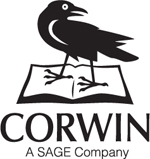
Copyright 2009 by Corwin
All rights reserved. When forms and sample documents are included, their use is authorized only by educators, local school sites, and/or noncommercial or nonprofit entities that have purchased the book. Except for that usage, no part of this book may be reproduced or utilized in any form or by any means, electronic or mechanical, including photocopying, recording, or by any information storage and retrieval system, without permission in writing from the publisher.
For information:
 | Corwin
A SAGE Company
2455 Teller Road
Thousand Oaks, California 91320 (800) 233-9936
Fax: (800) 417-2466
www.corwinpress.com | SAGE India Pvt. Ltd.
B 1/I 1 Mohan Cooperative Industrial Area
Mathura Road, New Delhi 110 044
India |
SAGE Ltd.
1 Olivers Yard
55 City Road
London EC1Y 1SP
United Kingdom | SAGE Asia-Pacific Pte. Ltd.
33 Pekin Street #02-01
Far East Square
Singapore 048763 |
Printed in the United States of America.
A catalog record of this book is available from the Library of Congress.
ISBN 978-1-4129-5530-0 (cloth)
ISBN 978-1-4129-5531-7 (pbk.)
This book is printed on acid-free paper.
09 10 11 12 13 10 9 8 7 6 5 4 3 2 1
| Acquisitions Editor: | Carol Chambers Collins |
| Editorial Assistant: | Brett Ory |
| Production Editor: | Cassandra Margaret Seibel |
| Copy Editor: | Mary L. Tederstrom |
| Typesetter: | C&M Digitals (P) Ltd. |
| Proofreader: | Susan Schon |
| Indexer: | Terri Corry |
| Cover Designer: | Scott Van Atta |
Contents
Foreword
Belinda Williams, PsyD
Cognitive psychologist and editor of Closing the Achievement Gap: A Vision for Changing Beliefs and Practices
I n this book, Tileston and Darling define and elaborate the central role of culture in the development of children living in poverty. They outline the ways in which the cultural dimensions of learning must be central in teaching and learning environments and reforms proposed to close achievement gaps. The book provides an analysis of why federal interventions, Title I and The No Child Left Behind Act (NCLB), and funding, as well as extended day and tutoring approaches have failed. The perspective and knowledge of the critical role of culture in learning invites us to understand what is missing in the attempts of the current system of education and what must be changed in the system to successfully educate millions of students whose cultural/daily experiences do not match the culture of schools as they exist today.
The most important contribution of this volume is the evidence presented to support the rejection of the deficit interpretation of the achievement gaps that exist among groups of disadvantaged and diverse students and their more advantaged peers. An asset model of learning and achievement differences offers educators strategies to adapt instruction without lowering expectations and standards. Definitions of cognition, intrinsic motivation, brain research, and resilience are elaborated and the best ways to provide instruction that integrates these understandings are discussed. Implications for leadership, teacher preparation and professional development are delineated.
Tileston and Darling offer a valuable tool for those committed to providing the best education possible for students the education system has traditionally failed. Those responsible in higher education institutions, government agencies, districts and schools will find the research, knowledge, and strategies synthesized by the authors a refreshing shift for comprehensive planning to ensure the education of all students. As the authors conclude, the consequences for ignoring the educational differences and needs of [culturally diverse] children of poverty will impact all of us.
Acknowledgments
C orwin gratefully acknowledges the contributions of the following reviewers:
Thomas S. C. Farrell
Professor
Brock University
St. Catharines, Ontario, Canada
Steve Hutton
Area Coordinator
Kentucky Center for Instructional Discipline
Villa Hills, KY
Toby J. Karten
Educator, Author, Adjunct Professor
College of New Jersey, Gratz University, Drew University
Marlboro, NJ
Mary Reeve
Director, Services for Exceptional Students
Gallup McKinley County Schools
Gallup, NM
Bill Sommers
Corwin author
Program Associate, Southwest Educational Development Laboratory
Austin, TX
Rosemary Traor
Assistant Professor, Urban Education
University of North Carolina at Charlotte
Charlotte, NC
About the Authors
 Donna Walker Tileston has served education as a leader in teaching, administration, research, writing, software development, and national consulting for the past 30 years. She has been responsible for curriculum development, management, technology, finance, grants management, public relations, and drug abuse prevention programs. For the past 25 years she has been actively involved in brain research, including factors that inhibit learning or increase the brains ability to put information into long-term memory. Tilestons 10-book collection What Every Teacher Should Know (Corwin, 2003) received the 2004 Distinguished Achievement Award for Excellence in Educational Publishing by the American Educational Publishers Association. Other Corwin titles include Strategies for Active Learning (2006); What Every Parent Should Know About Schools, Standards, and High-Stakes Tests (2005); Training Manual for What Every Teacher Should Know (2005); Ten Best Teaching Practices: How Brain Research, Learning Styles, and Standards Define Teaching Competencies (2005); and Strategies for Teaching Differently: On the Block or Not (1998). Tileston has presented extensively at local, state, national, and international conferences, including in The Hague in November 2005 and in Warsaw during March 2006.
Donna Walker Tileston has served education as a leader in teaching, administration, research, writing, software development, and national consulting for the past 30 years. She has been responsible for curriculum development, management, technology, finance, grants management, public relations, and drug abuse prevention programs. For the past 25 years she has been actively involved in brain research, including factors that inhibit learning or increase the brains ability to put information into long-term memory. Tilestons 10-book collection What Every Teacher Should Know (Corwin, 2003) received the 2004 Distinguished Achievement Award for Excellence in Educational Publishing by the American Educational Publishers Association. Other Corwin titles include Strategies for Active Learning (2006); What Every Parent Should Know About Schools, Standards, and High-Stakes Tests (2005); Training Manual for What Every Teacher Should Know (2005); Ten Best Teaching Practices: How Brain Research, Learning Styles, and Standards Define Teaching Competencies (2005); and Strategies for Teaching Differently: On the Block or Not (1998). Tileston has presented extensively at local, state, national, and international conferences, including in The Hague in November 2005 and in Warsaw during March 2006.
 Sandra K. Darling is the founder and president of Learning Bridges. Grounded in five years of research, the Learning Bridges Aligned Instructional Database contains the most effective, research-based instructional strategies for the standards of all statesin rank order of their power to impact learning. Born into extreme poverty in rural Minnesota, Dr. Darling understands the power of having significant adults in her life who believed in her, held high expectations for her, and taught her the value of integrity. She received her bachelors degree, three masters degrees, and a PhD from the University of Minnesota in related areas of education. She has coauthored three books in education and published articles in several education journals. She has presented to thousands of educators on standards-based education, curriculum alignment, inclusion practices, transformational leadership, school improvement, strategic planning, and assessment practices. She is the leading expert on aligning instructional strategies to content standards and delivering that instruction with the modifications to close the gap in achievement for diverse learners, that is, students from poverty, those from diverse cultures, and English language learners.
Sandra K. Darling is the founder and president of Learning Bridges. Grounded in five years of research, the Learning Bridges Aligned Instructional Database contains the most effective, research-based instructional strategies for the standards of all statesin rank order of their power to impact learning. Born into extreme poverty in rural Minnesota, Dr. Darling understands the power of having significant adults in her life who believed in her, held high expectations for her, and taught her the value of integrity. She received her bachelors degree, three masters degrees, and a PhD from the University of Minnesota in related areas of education. She has coauthored three books in education and published articles in several education journals. She has presented to thousands of educators on standards-based education, curriculum alignment, inclusion practices, transformational leadership, school improvement, strategic planning, and assessment practices. She is the leading expert on aligning instructional strategies to content standards and delivering that instruction with the modifications to close the gap in achievement for diverse learners, that is, students from poverty, those from diverse cultures, and English language learners.





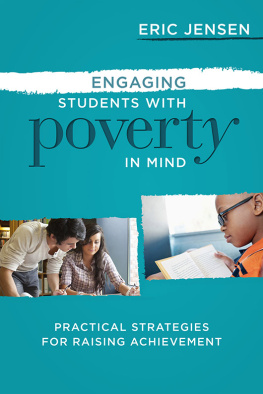
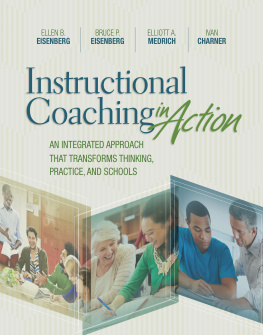
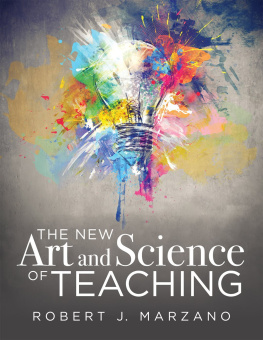
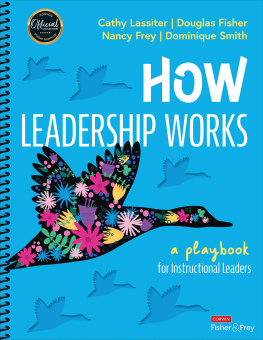

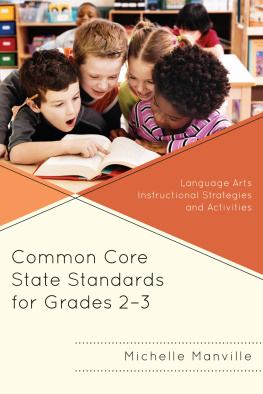
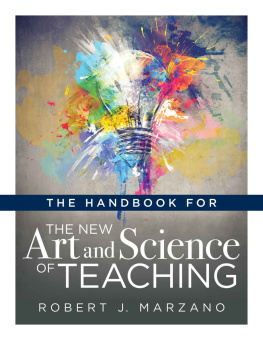


 Donna Walker Tileston has served education as a leader in teaching, administration, research, writing, software development, and national consulting for the past 30 years. She has been responsible for curriculum development, management, technology, finance, grants management, public relations, and drug abuse prevention programs. For the past 25 years she has been actively involved in brain research, including factors that inhibit learning or increase the brains ability to put information into long-term memory. Tilestons 10-book collection What Every Teacher Should Know (Corwin, 2003) received the 2004 Distinguished Achievement Award for Excellence in Educational Publishing by the American Educational Publishers Association. Other Corwin titles include Strategies for Active Learning (2006); What Every Parent Should Know About Schools, Standards, and High-Stakes Tests (2005); Training Manual for What Every Teacher Should Know (2005); Ten Best Teaching Practices: How Brain Research, Learning Styles, and Standards Define Teaching Competencies (2005); and Strategies for Teaching Differently: On the Block or Not (1998). Tileston has presented extensively at local, state, national, and international conferences, including in The Hague in November 2005 and in Warsaw during March 2006.
Donna Walker Tileston has served education as a leader in teaching, administration, research, writing, software development, and national consulting for the past 30 years. She has been responsible for curriculum development, management, technology, finance, grants management, public relations, and drug abuse prevention programs. For the past 25 years she has been actively involved in brain research, including factors that inhibit learning or increase the brains ability to put information into long-term memory. Tilestons 10-book collection What Every Teacher Should Know (Corwin, 2003) received the 2004 Distinguished Achievement Award for Excellence in Educational Publishing by the American Educational Publishers Association. Other Corwin titles include Strategies for Active Learning (2006); What Every Parent Should Know About Schools, Standards, and High-Stakes Tests (2005); Training Manual for What Every Teacher Should Know (2005); Ten Best Teaching Practices: How Brain Research, Learning Styles, and Standards Define Teaching Competencies (2005); and Strategies for Teaching Differently: On the Block or Not (1998). Tileston has presented extensively at local, state, national, and international conferences, including in The Hague in November 2005 and in Warsaw during March 2006. Sandra K. Darling is the founder and president of Learning Bridges. Grounded in five years of research, the Learning Bridges Aligned Instructional Database contains the most effective, research-based instructional strategies for the standards of all statesin rank order of their power to impact learning. Born into extreme poverty in rural Minnesota, Dr. Darling understands the power of having significant adults in her life who believed in her, held high expectations for her, and taught her the value of integrity. She received her bachelors degree, three masters degrees, and a PhD from the University of Minnesota in related areas of education. She has coauthored three books in education and published articles in several education journals. She has presented to thousands of educators on standards-based education, curriculum alignment, inclusion practices, transformational leadership, school improvement, strategic planning, and assessment practices. She is the leading expert on aligning instructional strategies to content standards and delivering that instruction with the modifications to close the gap in achievement for diverse learners, that is, students from poverty, those from diverse cultures, and English language learners.
Sandra K. Darling is the founder and president of Learning Bridges. Grounded in five years of research, the Learning Bridges Aligned Instructional Database contains the most effective, research-based instructional strategies for the standards of all statesin rank order of their power to impact learning. Born into extreme poverty in rural Minnesota, Dr. Darling understands the power of having significant adults in her life who believed in her, held high expectations for her, and taught her the value of integrity. She received her bachelors degree, three masters degrees, and a PhD from the University of Minnesota in related areas of education. She has coauthored three books in education and published articles in several education journals. She has presented to thousands of educators on standards-based education, curriculum alignment, inclusion practices, transformational leadership, school improvement, strategic planning, and assessment practices. She is the leading expert on aligning instructional strategies to content standards and delivering that instruction with the modifications to close the gap in achievement for diverse learners, that is, students from poverty, those from diverse cultures, and English language learners.